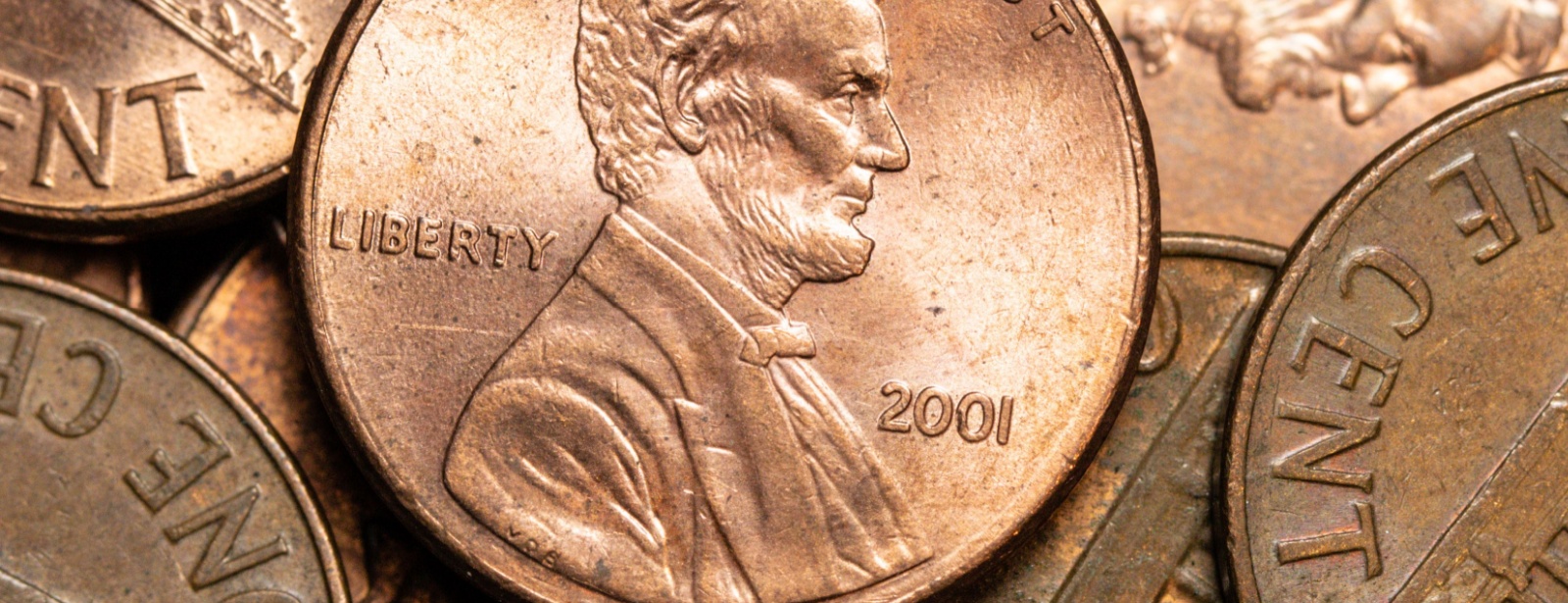

Phasing Out the U.S. Penny: What It Means for You
Timeline & What to Expect Next
- May 2025: Treasury confirmed the final order of penny blanks; production began winding down.
- Late 2025–Early 2026: Penny production ends; the Federal Reserve continues distribution until inventories are depleted.
- After inventories decline: Cash transactions that can’t be made to the exact cent will round to the nearest nickel. Until federal or state guidelines are issued, rounding policies may vary among businesses and institutions.
Bank Visits: Checks, Deposits, and Cash Back
Most in-branch cash interactions will involve cashing checks rather than purchasing goods. While pennies are being phased out, Exchange Bank will continue to use pennies as long as we have them available. Only when our supply is depleted will we round cash payouts to the nearest nickel. Until then, all cash transactions will continue to be paid to the exact cent whenever possible.
Electronic transactions—such as deposits, transfers, or card payments—will continue to post to the exact cent, so rounding will only ever apply to cash payouts when pennies are unavailable.
Best Way to Avoid Rounding at the Bank
To ensure your funds settle exactly and you still leave with cash:
- Deposit your check into your account (exact amount, no rounding).
- Request cash back for an amount ending in .00 or .05 (or any nickel increment).
This method avoids pennies entirely, ensuring no rounding occurs. It’s the simplest way to preserve every cent.
How Rounding Works When You Cash a Check That Includes Pennies
The cash payout will be rounded to the nearest nickel if pennies are unavailable:
- .01 or .02 → rounds down to .00 (you receive up to 2¢ less)
- .03 or .04 → rounds up to .05 (you receive up to 2¢ more)
- .06 or .07 → rounds down to .05 (you receive up to 2¢ less)
- .08 or .09 → rounds up to .10 (you receive up to 2¢ more)
- .00 or .05 → no change
Examples:
- Check for $100.01 → $100.00 (you receive 1¢ less)
- Check for $250.04 → $250.05 (you receive 1¢ more)
- Check for $75.06 → $75.05 (you receive 1¢ less)
- Check for $19.09 → $19.10 (you receive1¢ more)
Who absorbs the difference?
- If cents round down, you absorb 1–2¢.
- If cents round up, Exchange Bank absorbs 1–2¢.
Across many transactions, these small amounts balance out—but the deposit-then-cash-back option avoids any difference altogether.
Beyond the Bank: Everyday Purchases
- Cash purchases at retailers may round to the nearest nickel on the final total.
- Card, mobile wallet, and online payments continue to process to the exact cent.
- Tips and line items can still include cents; rounding applies only to the final cash amount owed or returned.
